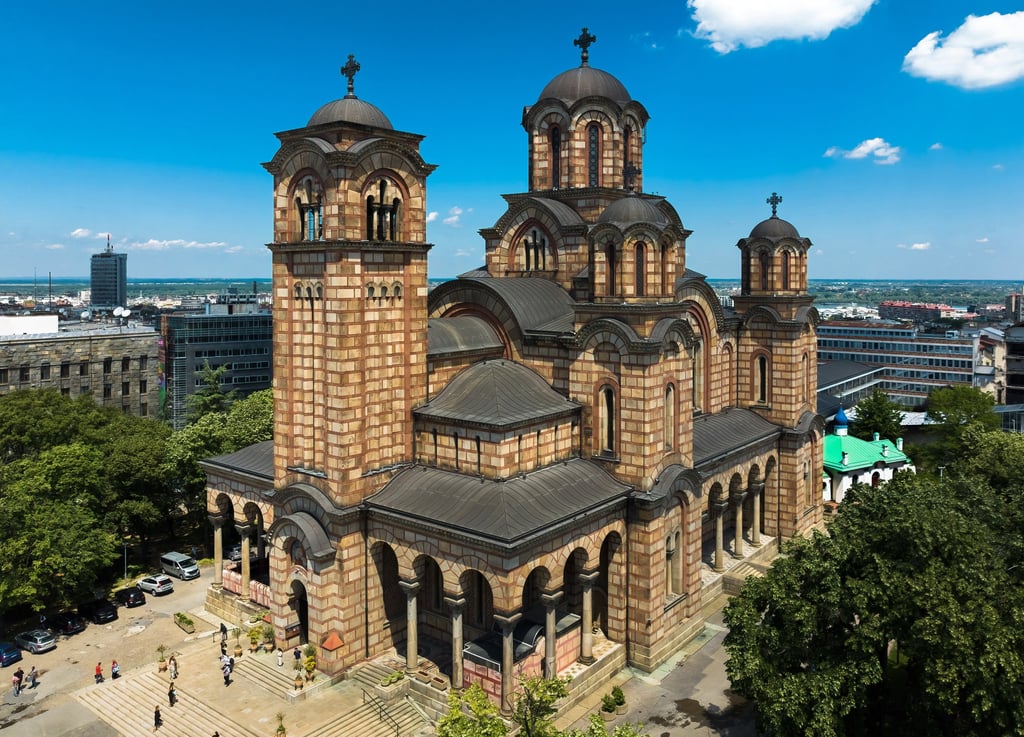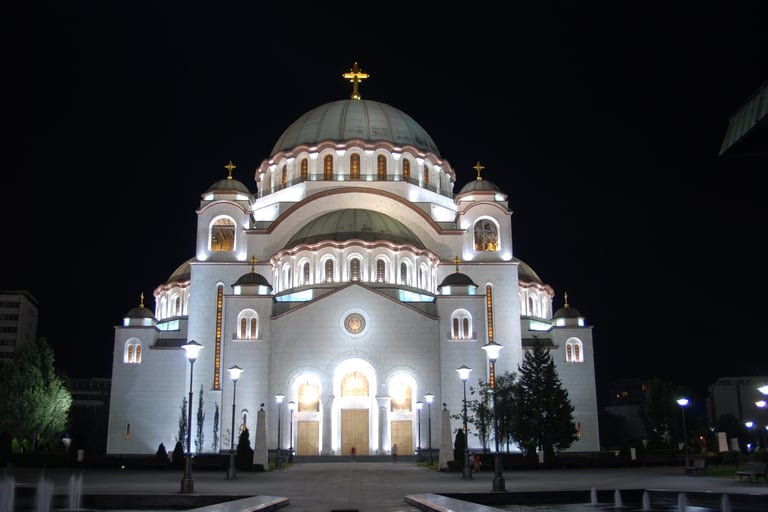Belgrade – Fortress of the Balkans
Discover Belgrade, where rivers meet and centuries-old fortresses guard a city rich in resilience, history, and Balkan spirit.
DESTINATIONS
Jetsclusive
6/29/20255 min read


Belgrade – Fortress of the Balkans
Rising above the meeting point of the Sava and Danube rivers, Belgrade has stood as a crossroads of Europe for more than two millennia. It is a city shaped by siege and survival, known for its sprawling fortress and lively spirit. The unique position at the river confluence gave Belgrade both protection and authority, drawing countless cultures to its stone walls. Today, the fortress’s layers tell stories of ancient warriors, global empires, and a resilient city that keeps reinventing itself. Here’s how Belgrade’s stronghold and layered heritage have shaped its unbreakable identity.
From Ancient Bastion to Modern Metropolis: The History of Belgrade Fortress
Belgrade Fortress (Kalemegdan), with its tangle of gates, ramparts, and towers, stands as a physical timeline of Balkan and European history. Its origins stretch back to the Neolithic period, with every era leaving a trace, from Roman bricks to Ottoman towers and Austrian bastions.
Birth at the Confluence: Early Settlements and Roman Legacy
Life at the mouth of the rivers began far before the city’s name was written down. Archaeologists have uncovered tools, pottery, and burial sites suggesting intense activity here as early as 5,000 BC. Much later, Celtic tribes built a town they called “Singidun,” using earth and timber to defend themselves.
The Romans saw an opportunity: whoever controlled this plateau controlled access between East and West. Around the 1st century AD, they fortified Singidunum. Roman soldiers built mighty stone walls and military headquarters, traces of which still sleep beneath Belgrade’s cobblestones. The so-called Roman Well, an engineering wonder, reinforced the fortress’s self-sufficiency, with its deep stone shaft plunging 14 meters into the earth.
Medieval Turmoil: Byzantine, Hungarian, and Ottoman Rule
After the fall of Rome, Belgrade became a pawn in grander struggles. Persians, Goths, and later Byzantines all laid claim to its perch. Medieval power wastes no time, and soon Hungarians and Bulgarians laid siege to the city.
Then, the Ottoman Empire swept in. In 1456, the city’s defenders withstood a legendary siege by the Ottomans; the sound of church bells from that victory still echoes on the day. Yet by 1521, the Ottomans took the city, transforming it into a military and administrative hub. Towers, gates, and mosques appeared alongside churches and remnants of former empires. Ottoman tombs like Damat Ali Pasha’s türbe stand as quiet reminders of this time.
Austrians contested the city throughout the following centuries. Each shift in power meant new walls, fresh scars, and another layer in the city’s complex make-up. The fortress changed hands dozens of times, bearing new names, faces, and stone.
Compare Private Jet Pricing To Belgrade Here Powered By Villiers Jets - Trusted by 1000+ flyers worldwide
Modern Era Transformations: From Military Stronghold to Cultural Landmark
By the 19th century, modern warfare had left medieval walls behind, but Belgrade’s fortress kept its dignity. Habsburg and Ottoman rivalry continued until the 1800s, but as the city spilled over its fortress walls in the 19th and 20th centuries, the need for military defense disappeared.
Monuments replaced barracks, parks grew above ancient foundations, and the fortress opened to the public. Key sites like the Victor monument, built to mark Serbian independence, captured this shift from war to peace. Museums took over gunpowder magazines, and churches like Ruzica and Saint Petka were born again amidst the ruins.
Today, just 12% of the fortress has been explored by archaeologists. New finds keep rewriting the city’s history, reminding everyone that Belgrade is alive with stories under every stone.
Cultural, Strategic, and Symbolic Significance of Belgrade Today
Why do people call Belgrade the “Fortress of the Balkans”? Because this city refuses to be defined only by its scars. Every battle, uprising, and celebration built its sense of unity and diversity. It welcomes the new without forgetting the old.
Architectural Landmarks and Living Heritage
Wander through the Upper Town, you’ll see relics from every age:
Victor Monument: The stoic figure holding a sword and falcon, designed in 1928, overlooks the city as a symbol of victory and freedom.
Roman Well: Still mysterious, this deep stone shaft once provided water, cloaked in legend and intrigue.
Ruzica Church: Built within the fortress walls, it boasts chandeliers made from spent shell casings, blending faith and remembrance.
Nebojša Tower: This lone tower guarded river approaches, serving as a prison and later a museum.
Kalemegdan Park: Surrounds the fortress with greenery and peace, offering a sharp contrast to the turbulent stories beneath.
Ongoing excavations mean new discoveries appear regularly, adding chapters to the city’s story and keeping Belgrade’s fortress relevant.
Compare Private Jet Pricing To Belgrade Here Powered By Villiers Jets - Trusted by 1000+ flyers worldwide
Belgrade as a Hub of Culture, Tourism, and Urban Dynamism
The fortress isn’t just old; it pulses with life. Today, Kalemegdan hosts every kind of gathering—from open-air concerts and film festivals to chess tournaments and romantic strolls at sunset.
Tourists flock here for the views, but locals treat it like their backyard. The cafés, museums, and art installations make it a favorite meeting spot. Street artists leave new marks on the ancient stones, and Belgrade’s nightlife bubbles up both in and around the fortress.
Thanks to its location, anyone visiting the Balkans soon finds themselves drawn to Belgrade. Its layered identity—part Ottoman, part Habsburg, part modern Serbian—makes every walk through its streets a journey through time.
The City as Crossroads of Empires: Strategic and Contemporary Importance
For centuries, armies tried to control the “key to Central Europe”—Belgrade’s rivers and ramparts. Its location has made it a trading, military, and cultural crossroad. Today, it’s one of southeast Europe’s largest and most diverse cities. Nearly every culture in the region left a mark here, shaping a city that can speak in many languages and welcome every guest.
Belgrade still faces challenges. Urban growth pushes against the need to conserve its heritage. Modern projects—like the planned city gondola or new waterfront developments—sometimes meet resistance from people worried about losing what makes Belgrade unique. Balancing progress with preservation is hard, but most agree the fortress itself must be protected at all costs.
Conclusion
Belgrade’s fortress isn’t just a pile of stones—it’s the city’s memory and its heartbeat. From ancient battles to modern festivals, from Roman tiles to street murals, every layer of Kalemegdan tells a part of the story. The fortress caps a city defined by both hardship and joy, standing as guardian, symbol, and playground.
What keeps Belgrade alive is its refusal to choose between past and future. Here, stone walls host art shows, ancient towers frame Instagram shots, and every crack in the pavement might hide something priceless. The fortress remains the stage for Belgrade’s unending story, proof that this Balkan city will always watch, adapt, and welcome new beginnings.


Luxury
Explore the world of private aviation and travel.
support@jetsclusive.net
© 2025. All rights reserved.
